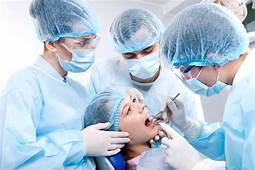
Since dentists are able to continue to perform elective surgeries while the COVID-19 pandemic continues, determining the optimal timing of procedures for patients who have recovered from COVID-19 infection and the appropriate level of preoperative evaluation are challenging given the current lack of evidence or precedent. The following is intended to help dentists in evaluating and scheduling these patients. It is subject to change as new evidence emerges.
In general, all non-urgent procedures should be delayed until the patient has met criteria for discontinuing isolation and COVID-19 transmission precautions and has entered the recovery phase. Elective surgeries should be performed for patients who have recovered from COVID-19 infection or have documented antibodies.
Current data indicates that, in patients with mild to moderate COVID-19, repeat RT-PCR testing may detect SARS- CoV-2 RNA for a prolonged period after symptoms first appear. However, in these patients, replication-competent virus has not been recovered after 10 days have elapsed following symptom onset. Considering this information, the CDC recommends that physicians and dentists use a time- and symptom-based strategy to decide when patients with COVID-19 are no longer infectious.
In a recent study, approximately 95 percent of severely or critically ill patients (including some with severe immunocompromise), replication-competent virus was not present after 15 days following the onset of symptoms. Replication-competent virus was not detected in any severely or critically ill patient beyond 20 days after symptom onset.
If a patient suspected of having SARS-CoV-2 infection is never tested, the decision to discontinue transmission- based precautions can be made using the symptom-based strategy.
Other factors, such as advanced age, diabetes mellitus, or end-stage renal disease, may pose a much lower degree of immunocompromise; their effect upon the duration of infectivity for a given patient is not known. Ultimately, the degree of immunocompromise for the patient is determined by the treating provider, and preventive actions are tailored to each individual and situation.
The preoperative evaluation of a surgical patient who is recovering from COVID-19 involves optimization of the patient’s medical conditions and physiologic status. Since COVID-19 can impact virtually all major organ systems, the timing of surgery after a COVID-19 diagnosis is important when considering the risk of postoperative complications.
From a sedation perspective, studies have reported such finds as a respiratory infection within the month preceding surgery has previously been found to be an independent significantly higher risk of pulmonary complications within the first four weeks after diagnosis, an upper respiratory infection within the month preceding surgery has previously been found to be an independent risk factor for postoperative pulmonary complications. Patients with diabetes are more likely to have severe COVID-19 disease and are more likely to be hospitalized. Since there is a lack of any significant longitudinal data on post COVID-19 recovery, we can only extrapolate from influenza A H1N1 pandemic that pulmonary function continues to recover up to three months after ARDS.
Given this current knowledge base, wait times before surgery can be reasonably extrapolated and are a suggested starting point in the preoperative evaluation of the COVID-19-recovered patient.
The timing of elective surgery after recovery from COVID-19 utilizes both symptom- and severity-based categories. Suggested wait times from the date of COVID-19 diagnosis to surgery are as follows:
These timelines should not be considered definitive; each patient’s preoperative risk assessment should be individualized, factoring in surgical intensity, patient co-morbidities, and the benefit/risk ratio of further delaying surgery.
Residual symptoms such as fatigue, shortness of breath, and chest pain are common in patients who have had COVID-19 and these symptoms can continue for upto 60 days or more after diagnosis. In addition, COVID-19 may have long term deleterious effects on myocardial anatomy and function. A more thorough preoperative evaluation, scheduled further in advance of surgery with special attention given to the cardiopulmonary systems, should be considered in patients who are considering sedation and have recovered from COVID-19 and especially those with residual symptoms.
At present, the CDC does not recommend re-testing for COVID-19 within 90 days of symptom onset. Repeat PCR testing in asymptomatic patients is strongly discouraged since persistent or recurrent positive PCR tests are common after recovery. However, if a patient presents within 90 days and has recurrence of symptoms, re-testing and consultation with an infectious disease expert can be considered. Once the 90-day recovery period has ended, the patient should undergo one pre-operative nasopharyngeal PCR test ideally ? three days prior to the procedure.
Summary:
The guidance is that elective surgeries should be postponed for patients infected with COVID-19, but patients who have recovered from the infection should be considered for elective surgery. It also provides details on how to determine when a patient is no longer infectious using the CDC’s recommendations, which include a time- and symptom-based guide.
In addition, the CDC recommends ending isolation for a patient with severe to critical illness from COVID-19 after waiting between 10 and 20 days after the start of symptoms as well as following the other time-based guides. Ultimately, the joint guidance recommended various wait times between a patient’s COVID-19 diagnosis and any elective surgery. The guidance suggested waiting for at least: